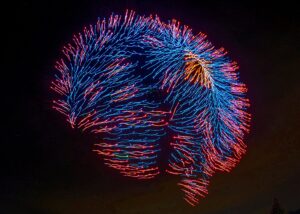
Drone shows have become a hot topic and are now incorporated into various celebratory events, ranging from the Super Bowl to the Olympics. This past 4th of July, the night sky above the Hudson River was illuminated by a fleet of 500 drones shaping the Statue of Liberty, capturing people’s hearts and immersing the celebration of freedom with an unforgettable experience. Choreographed with precision and animated to perfection, the drone show pushes the boundaries of technology and entertainment. Drones dance in perfect harmony synchronized with music and other captivating visual effects to create vibrant and dynamic performances for the audiences. In this article, we delve into the intricacies of drone show choreography and explore the technology, planning, and execution behind these dazzling displays.
Chapter 1: The Technology
At the heart of every mesmerizing drone show lies meticulous choreography that was only made possible through 3D animation. Imagine individual drones as a singular pixel. Compared to traditional pixel art where individual pixels are placed on a grid to create a fixed, silent image, 3D rendering of drone motions takes it a step further by delivering stories and emotions through dynamic visual movements, despite the limited number of pixels. Animation tools, such as Drone Show Software, have been developed to cater to aspiring needs.
During the development of the choreography, the virtual animation of the drones can be viewed from multiple angles, adapting to the viewing experiences of the crowd. Almost any pattern of artistic direction can be made to live by translating graphics into meticulous flight arrangements. The real-life drone behaviors are simulated in the software-in-the-loop (SIL) virtual environment. SIL simulators are widely used in software development and testing, especially in the field of robotics and unmanned systems, including aircraft, vehicles, and now drones. They provide a realistic simulation of the system’s dynamics, sensors, actuators, and operating environment. By providing simulated outputs that mimic the behavior of the real system, SIL allows developers to test their software’s functionality, performance, and integration with other components, such as drones carrying fireworks or smoke generators. Once the virtual drones have been programmed with the desired choreography, the flight path and speed for each drone are calculated to ensure the intended illusion can be presented and to mitigate the risk of collisions.
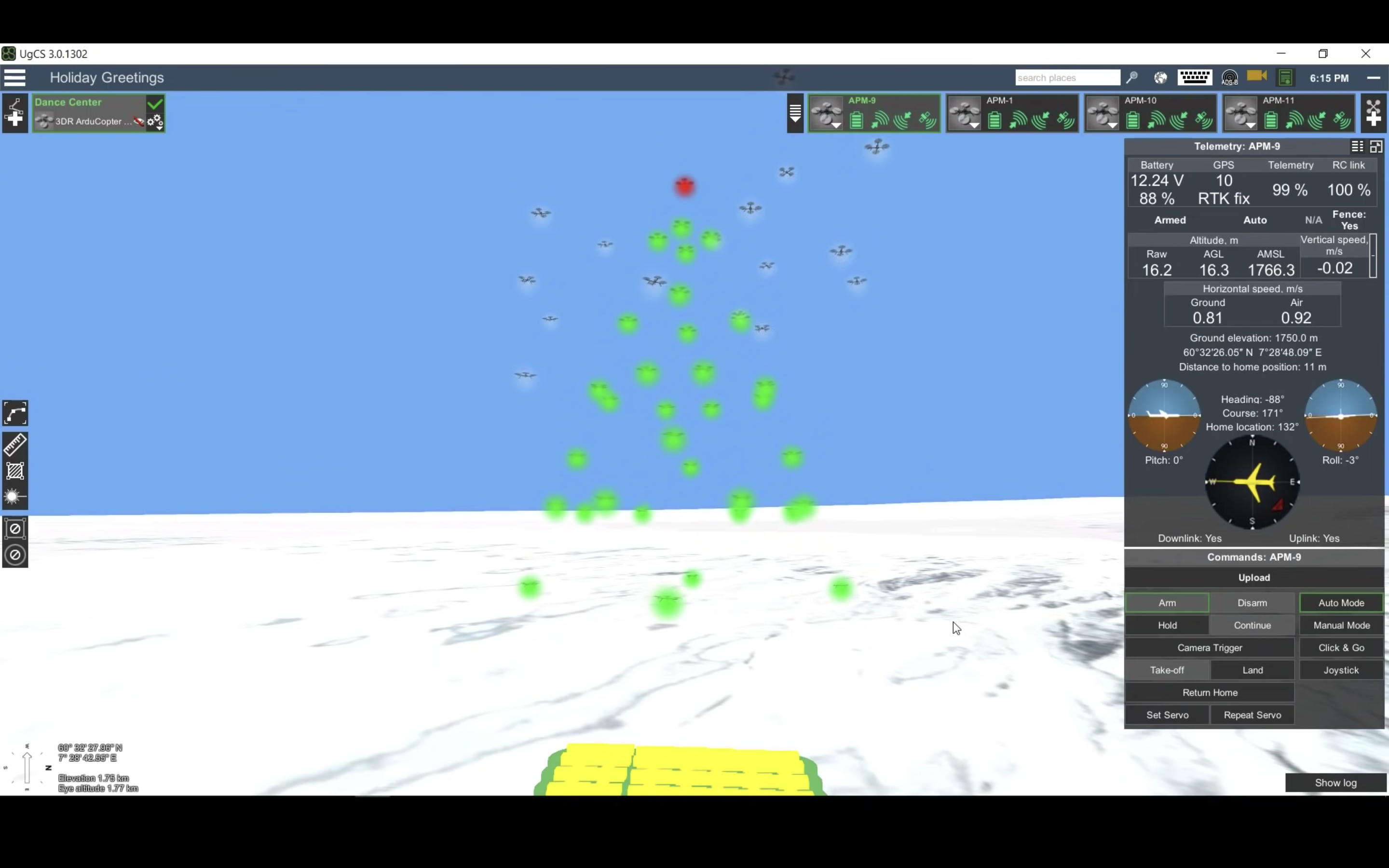
Chapter 2: The Planning
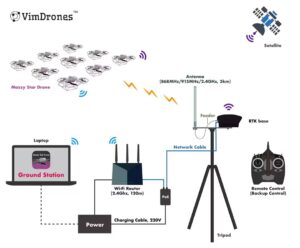
To successfully orchestrate fleets of drones in real life, a sophisticated combination of computer systems, satellite technology, WiFi, and radio signals is required. The equipment setup may vary depending on the animation system and the type of drones being used, but certain essential components are common across setups. These typically include a real-life kinematic (RTK) GPS base station for precise positioning, a WiFi router to facilitate communication between the different drones, and a main control laptop to manage and coordinate the entire operation. This intricate network of technology enables seamless communication and synchronization, allowing for the stunning aerial displays.
In terms of logistics, the chosen venue should be spacious enough to accommodate all drones. The recommended distance between two flying drones is around 2.5 – 3 meters (8.2 – 9.8 feet). If you plan to host 50 drones, the venue should be at least 450 square meters (4844 square feet). Additionally, a safety parameter limiting the flying zones using either a cylinder or polygon fence is set. To ensure the optimal take-off and landing procedure, the surface of the area should be reasonably flat and devoid of tall grass or deep snow. Flat platforms can be utilized if needed, although caution must be exercised.
Chapter 3: The Execution
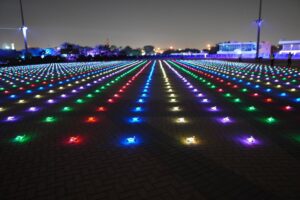
Once all the necessary preparation has been made, the projected take-off and landing position for the drones will be confirmed. Each drone will be carefully orientated and positioned in the correct direction. After setting the orientation, the software will allocate a specific flight path and animation to each drone at different positions. These instructions will be uploaded to the respective drones, followed by a thorough pre-flight check to confirm that all are properly functioning. It is of utmost importance that the formations of the drones are in alignment with the intended design and that the lights on each drone are in optimal working condition to deliver a wonderful performance.
All drones will be programmed with precise starting times to ensure a synchronized departure according to schedule. The real-time drone parameter and flight are displayed on a 3D map for continuous monitoring and allow for prompt adjustment if necessary. In the event of surprises such as unforeseen strong winds, the ground-control interface enables the operator to individually land each drone at any given moment. To prioritize safety and maintain control, a separate computer and radio channel are dedicated to an independent button, which serves as an emergency stop mechanism, if required. Furthermore, a skilled human pilot equipped with a remote controller is present, providing manual control and intervention capabilities as a precautionary measure. These comprehensive measures ensure the drone show can be managed and executed safely and efficiently, even in the face of unexpected situations.
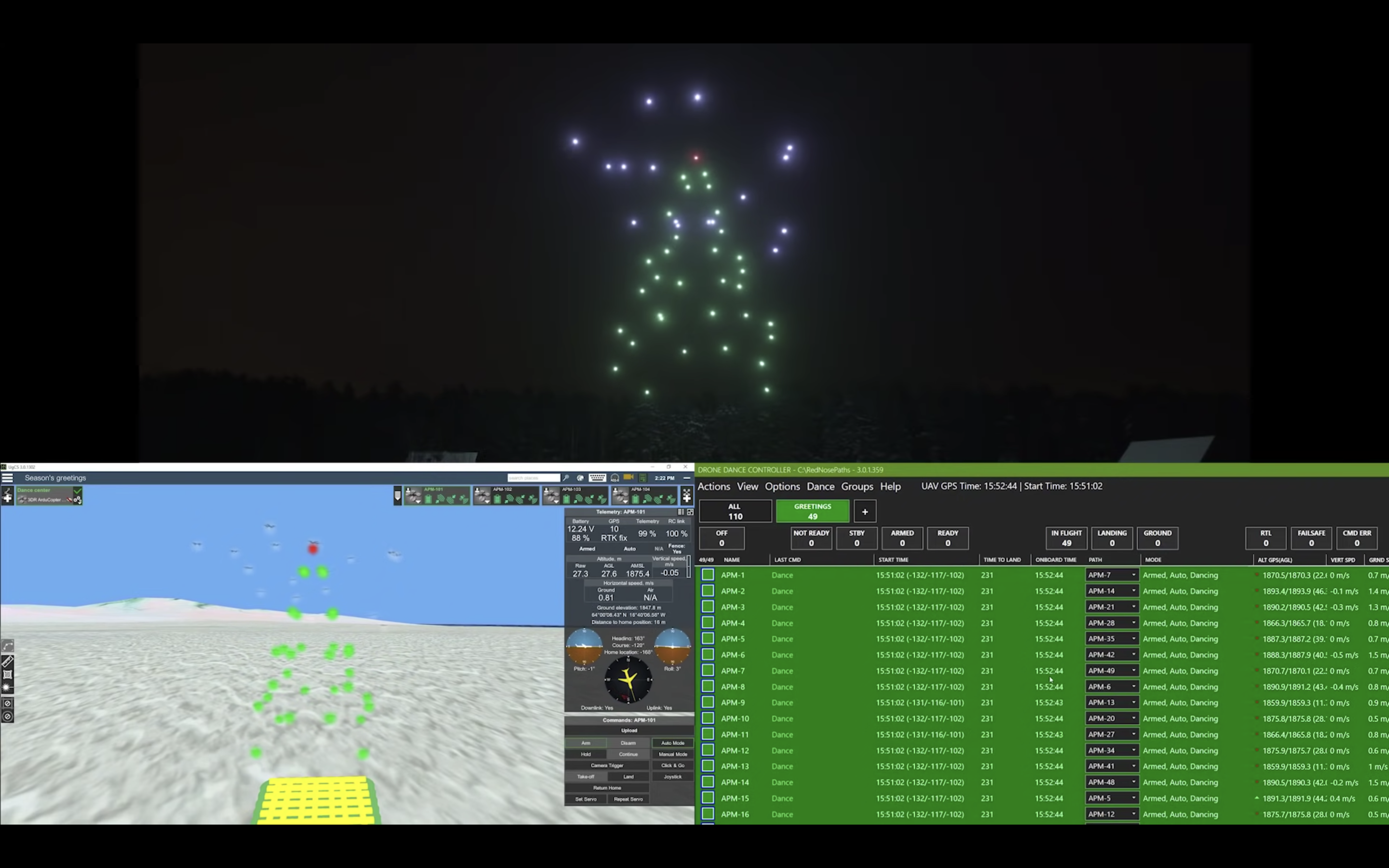
Aside from the technical aspects that guarantee the safe and flawless execution of drone shows, there are several other critical considerations that event organizers must take into account to create a truly remarkable and successful aerial spectacle. These considerations encompass aspects beyond the technical precision and focus on the practical, regulatory, and financial aspects of organizing such an event.
Hours of labor. Crafting awe in the sky through stunning visual effects and precise aerial formations requires hours of labor. Despite being described in short paragraphs in the article, intricate programming and coordination are essential not only to design a show but also to ensure a seamlessly functioning show. The house of labor fluctuates depending on the expectations of the show. Like traditional pixel art, drone shows can incorporate visual patterns with varying levels of resolution, which necessitate different numbers of drones and their respective distances from one another. For instance, when creating a QR code for corporate promotion, a minimum number of drones must be used within a specific proximity. Increasing the number of drones and decreasing their distance enhances resolution but intensifies the labor involved.
Aviation regulation. Regulation plays a vital role in the planning and execution of drone shows. Under the Federal Aviation Regulations (FAA) of the United States, a minimum visibility of 3 statute miles is required for drones to take flight. Once airborne, drones must maintain a safe distance of at least 500 feet vertically and 200 feet horizontally from clouds. Additionally, there are altitude restrictions that prevent drones from exceeding 400 feet above ground level. These regulations become particularly relevant for large-scale drone shows, where careful attention must be paid to the number of drones utilized.
Weather. Adhering to regulations, it is essential to avoid scheduling shows on days forecasted with low clouds or fog, ensuring optimal visibility and safety for the drones. Additionally, the impact of colder weather on battery performance must be considered, particularly for shows occurring during Christmas and New Year celebrations. Lower temperatures can significantly affect battery life and reduce the duration of flights. To mitigate these challenges, environmentally controlled batteries can be used, though this may involve additional expenses.
Cost. The total cost of a drone show can vary significantly based on many factors: the duration and complexity of the show, hours of labor involved in programming and coordination, the number of drones utilized, the venue and location, special effects, and equipment. Additionally, obtaining proper insurance coverage is a crucial consideration to mitigate risks and liabilities associated with drone shows.
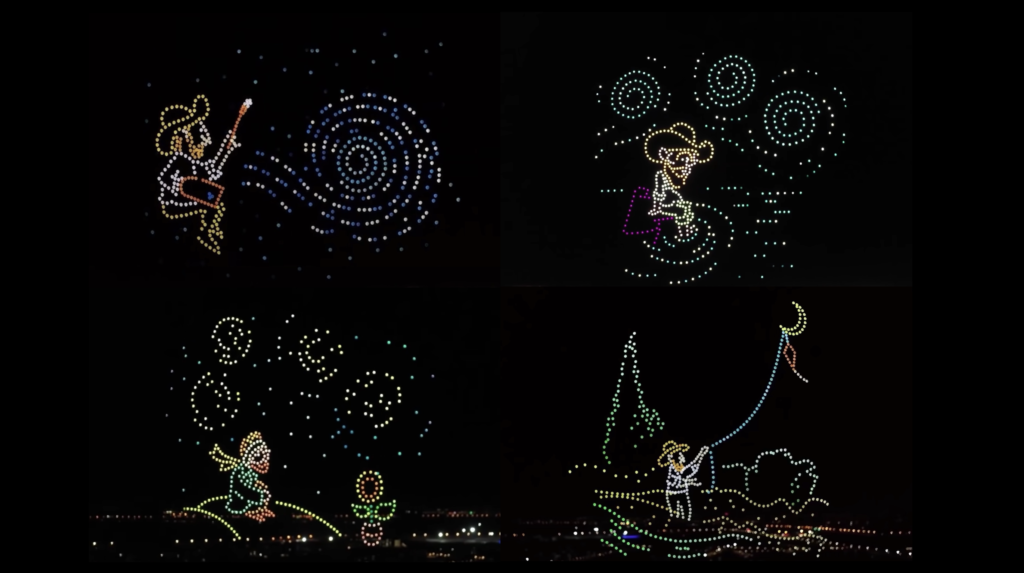
In the ever-evolving landscape of entertainment, drone shows have emerged as a breathtaking blend of artistry and technology. With each new performance, the skies transform into dynamic canvases, as if drops of paint have come to life in a symphony of motion. These mesmerizing displays ignite our imaginations, pushing the boundaries of what is possible and leaving us in awe of the limitless creative possibilities that lie ahead.
Peer editor: Honoreé Brewton